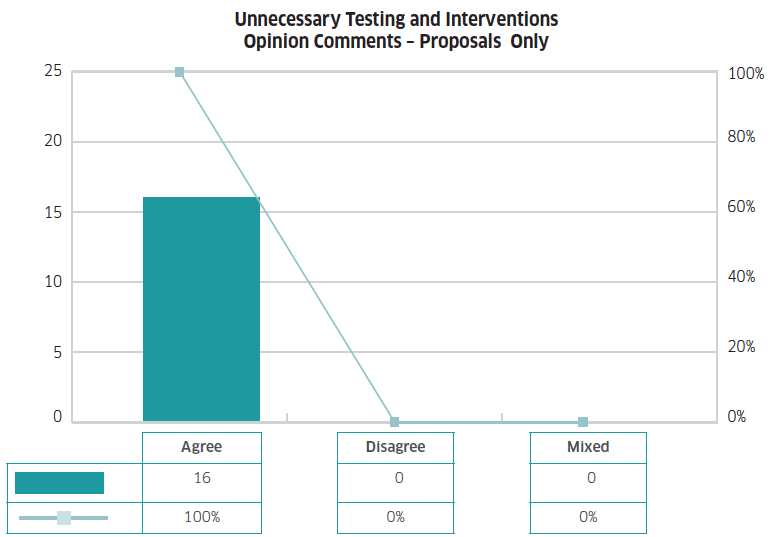Healthcare science national delivery plan consultation: analysis of responses
This report provides an analysis of responses to our consultation on proposals for a healthcare science national delivery plan.
4.0 Reducing Unnecessary Tests and Interventions
How might the involvement of HCS demand optimisation measures be improved to reduce unnecessary tests and interventions, while ensuring that the most appropriate tests are performed in all NHS boards?
4.1 Summary of what you told us around interventions
There was overall support that this work stream requires recognition in the final National Delivery Plan. Within Life Sciences there are three focuses:
- One in that tests are for monitoring and diagnosis, this area requires a co-ordinated approach across all boards.
- Secondly, is the requirement for a health economic analysis Scottish wide to scope the impact of emerging tests that intervene on a patient's pathway? One health board response felt that "clinical champions nationally are nominated" along with support for working groups assigned with performing a health economic analysis.
- Thirdly, there requires to be continuous quality improvement mechanisms, whereby the clinical impact of a test or image is monitored, with the potential to "link information from the tests/image to the treatment/medicine provided/to the clinical outcome achieved".
Graph 10 shows the percentage and count of respondents' replies on all unnecessary testing and intervention services proposals within the consultation document. Opinion statement replies have been categorised as Agree, Disagree and Mixed.

Examples, were given in Physical Sciences, where a "significant proportion of medical equipment returned for repair is found to be working correctly", along with the fact that unnecessary testing should also include unnecessary procurement of equipment in Health Technology Management.
Responses from the Medical Illustrators highlighted that a standardised image database would reduce the need for inappropriate retesting, examples included inappropriate referrals for skin cancers (such as skin tags/warts) and duplication of testing for optical coherence tomography due to IT systems not connected.
There was emphasis that demand optimisation and test interventions were not just a HCS issue, there is a requirement for national stakeholder engagement, from the service users, primary and secondary, quoted as "consultants, junior doctors, nurses, physician assistants, pharmacists, and community workers".
There were comments that this section of the NDP was just a Life Science issue, however examples were given of "inappropriate requesting of CT scans", and "ENT pre-admission clinics where individuals being pre-operatively assessed are also routinely re-tested (hearing assessment) as a matter of habit rather than need".
Mixed feelings in the responses whether a national appointment for a HCS National Lead for Service Demand and Optimisation would be of benefit, especially within Life Sciences. This should be an area for the local HCS leads working collaboratively via a distributed network of senior scientific leads and diagnostic networks, with accountability at board level. However, Physiology and professional bodies across all streams of HCS particularly welcomed this role.
The possibility of developing a Scottish version of the 'Atlas of Variation' and a similar document as the 'National Laboratory Medicine Catalogue' should be considered for Scotland.
The key to successful demand optimisation and intervention is the requirement for a sophisticated electronic ordering system. One of the networks raised concerns that 'Track Care' lacks the functionality required to support demand optimisation.
There were numerous comments that the proposal to halve inappropriate testing by 2016, is unachievable, as there are no specific tangible measureable targets set around this statement.
Contact
Email: Julie Townsend
There is a problem
Thanks for your feedback